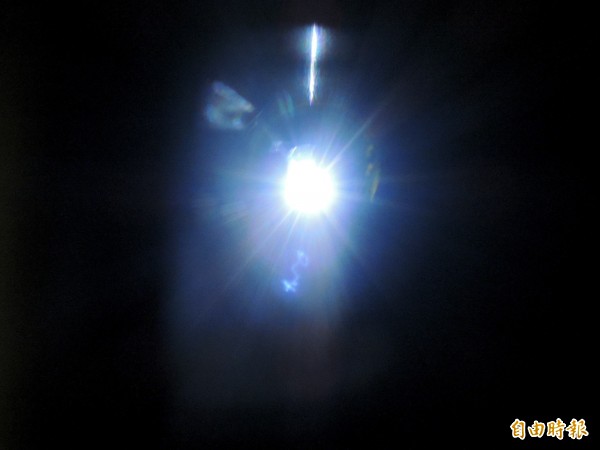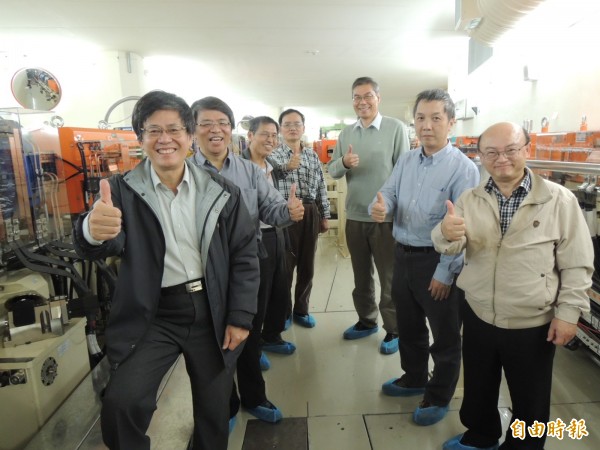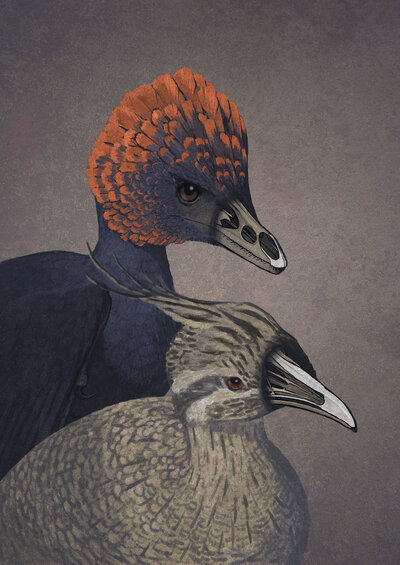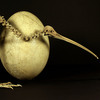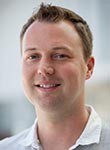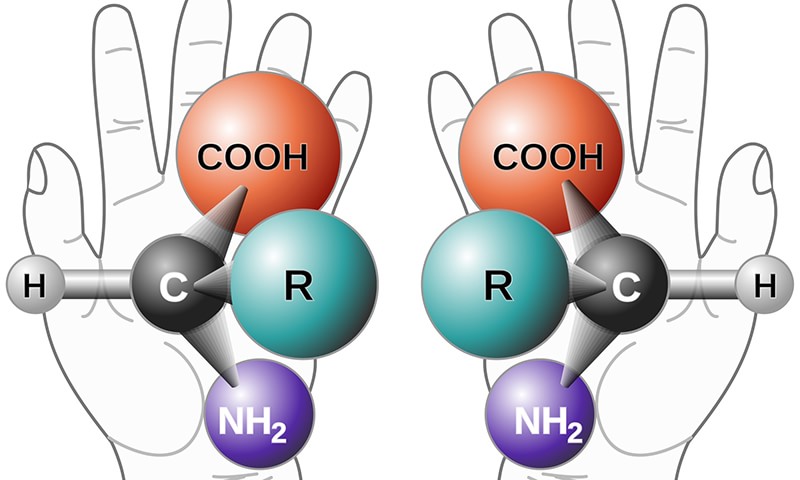The Greatest Generation of Scientists
By JOE NOCERA May 19, 2015
專欄作者
亞歷山大·里奇和那個時代偉大的科學家
喬·諾切拉2015年05月19日
A great man died late last month, one of the last of the pioneering biologists who essentially created the modern science of molecular biology. His name was Alexander Rich; he was 90 years old; and he had spent the past 57 years as a professor at the Massachusetts Institute of Technology, where he was still going to work right up until the last two months of his life.
上個月,一個偉大的人物去世了。他名叫亞歷山大·里奇(Alexander Rich),是當世僅存的幾位締造了現代分子生物科學的生物學先驅之一。他享年90歲,過去57年裡一直是麻省理工學院(Massachusetts Institute of Technology)教授,直到去世前兩個月,他還在繼續工作。
In
her obituary of Rich in The Times last week , Denise Gellene recounted some of his scientific achievements: In 1973, some 20 years after James Watson and Francis Crick worked out the structure of DNA — theoretically at least — Rich proved them right, using “ X-rays to produce a distinct image of the famous double helix.” He then went on to make important discoveries about the structure of ribonucleic acid, or RNA, and the way RNA translated genetic information in DNA. His work on RNA and DNA is one of the foundations of biotechnology and the biotech industry.
在
《紐約時報》上周刊登的訃告中,作者德妮絲·傑林(Denise Gellene)講述了里奇生前取得的科學成就:1973年,在詹姆斯·沃森(James Watson)和弗朗西斯·克里克(Francis Crick)(至少在理論上)得出DNA的結構20幾年之後,里奇證實他們的論斷是正確的,使用“X射線產生出了著名的雙螺旋結構的清晰圖像”。之後,他又繼續發現了核糖核酸(RNA)的結構,以及RNA將遺傳信息翻譯到DNA當中的方式,這些發現都十分重要。他在RNA和DNA方面開展的工作是生物技術及生物技術產業的一個基石。
Rich was a scientist with a wide-ranging curiosity.
In a video that was put together when he won an important award in 2008, Rich talked about “the excitement associated with a discovery. You see something new,” he said. “When somebody else makes a discovery and I read about it, I get that same boost of awe and wonder about nature.”
里奇是一個興趣廣泛的科學家。在2008年
獲得一個重要獎項後製作的視頻中,里奇談道了“得出發現時的興奮。你看到了新東西,”他說。“我讀到別人的發現時,也會促使我對大自然產生相同的敬畏和驚奇。”
In his lifetime, he met Albert Einstein, worked under Linus Pauling, and knew everyone from Crick and Watson to the great physicists Leo Szilard and Richard Feynman. Rich co-founded several companies. He mentored scientists who would go on to make their own important discoveries. He helped establish Israel's Weizmann Institute of Science, which is today one of that country's leading scientific institutions. He was a member of the
Pugwash Conferences on Science and World Affairs , whose founding mission was to eliminate nuclear weapons. “Alex lived a rich and important life,” wrote
Phillip Sharp , a scientist at MIT who was close to him. That he did.
在里奇的一生中,遇到過阿爾伯特·愛因斯坦(Albert Einstein),曾在萊納斯·鮑林(Linus Pauling)手下工作,認識克里克、沃森以及利奧·西拉德(Leo Szilard)和理查德·費曼(Richard Feynman)等等偉大的物理學家。里奇參與創立了數家公司,他指導過的科學家接下來又相繼做出了重要的發現。他幫助建立了以色列的魏茨曼科學研究學院(Weizmann Institute of Science),如今它成了該國領先的科研機構之一。他是帕格沃什科學和世界事務會議(
Pugwash Conferences on Science and World Affairs)的成員,這個組織創始使命是銷毀核武器。與里奇關係緊密的麻省理工科學家菲利普·夏普(
Phillip Sharp )寫道,“亞歷山大度過了豐富而重要的一生。”的確如此。
But as I looked into his life this week, three things struck me, all of which could be said not only of Rich, but of most members of that remarkable generation.
然而本週我回顧他的一生時,有三件事讓我印象深刻。這三件事不僅體現在里奇身上,而且在那一代的大多數傑出人物身上也都有體現。
The first was how maddeningly difficult — and painstaking — it was to create the building blocks of molecular biology. In the early 1950s, recalled
Jack Strominger , a scientist at Harvard who was Rich's roommate in college, the federal government did not hand out grants to scientists the way it does today; so just getting the money to do science was hard.
首先,打下分子生物學的基礎,異常艱難,而且需要付出辛勤的努力。曾是里奇大學室友的哈佛大學(Harvard)科學家傑克·施特羅明格(Jack Strominger)回憶道,在上世紀50年代初期,聯邦政府並不像今天這樣向科學家發放撥款,所以單單是拿到科研經費就相當困難。
“You walk into a lab today and you see the rows of equipment,” Strominger said. Equipment was much harder to come by, and not as precise. “As late as the 1980s,” he says, “X-ray crystallography was a difficult field. Now a young person can do it quickly.” It took many years — of trial and error — before Rich proved, through X-ray crystallography, that the Crick and Watson double helix structure was correct. “Persistence is luck,” Rich was known to say. That certainly was true of his generation of biologists.
“你今天走進實驗室裡,能看到成排的儀器,”施特羅明格說。但當時得到實驗設備要難得多,而且也沒那麼精密。他說,“遲至1980年代,X射線晶體學都還是一個很難的領域,現在一個年輕人就可以很快做好。”里奇經過了很多年——很多年的試錯——才終於通過X射線晶體學的手段,證實了克里克和沃森研究發現的雙螺旋結構是正確的。“堅持不懈就是幸運,”里奇曾這樣說。這對於他那一代生物學家來說,無疑是成立的。
http://en.wikipedia.org/wiki/RNA_Tie_Club
The second insight was how collaborative the scientists were. One good example was something called
the RNA Tie Club , of which Rich was a member. Founded by the physicist George Gamow, it was a collaborative effort to figure out the structure of RNA. (Each member was given a tie with a green-and-yellow RNA helix; hence the name of the group.) Although the members met infrequently, they circulated papers among each other and talked freely about their ideas, not fearing that their ideas would be stolen or misused.
第二個洞見在於,當時的科學家多麼樂於協作。一個例子是被稱為“RNA領帶俱樂部”(
RNA Tie Club )的組織,里奇就是其中的成員。由物理學家喬治·伽莫夫(George Gamow)建立的這個組織,目的是通過協作研究出RNA的結構。(每一位成員都得到了一條印有黃綠相間的RNA螺旋圖案的領帶,俱樂部因此而得名。)儘管成員間聚會並不頻繁,但是他們相互之間會傳閱論文,自由地交流觀點,不用擔心自己的觀點被人偷走 或誤用。
That kind of collaboration is something that has been largely lost in the scientific world. “Everything is so much more competitive now,” says Strominger. Scientists today are more likely to look for niches they can dominate. They compete to get their discoveries published ahead of rivals. Or to start a biotech company and make millions. “It would be pretty hard to capture the flavor of that period again,” says Strominger.
這種程度的合作,如今在科學界基本上已經不復存在。“所有領域的競爭現在都更激烈了,”施特羅明格說。今天的科學家更傾向於找一些能夠主導的細分領域,他們爭先恐後地要搶在對手前面發表論文介紹自己的發現,要么就是搶著開一家生物科技公司,賺到數百萬美元。施特羅明格說,“很難再找到那個時代的氣息了。”
Finally, one gets the sense — and this is especially true of Rich — that they didn't get into science to get rich or become famous. They loved science for its own sake. Rich would call other scientists, often in the evening, just to talk shop. “I never saw Alex bad-mouth another scientist, even when he had reason to,” said
Robert Gallo , the director of the Institute of Human Virology at the University of Maryland School of Medicine. “I don't know anybody who was more interested in science for its own sake than that man. He lived it and loved it.”
最後,我們還能感覺到,他們投身科學事業不是為了發財或成名,這一點在里奇身上尤為突出。他們熱愛科學只是為了科學本身。里奇會給其他科學家打電話,常常是在傍晚,只是談工作。“我從來沒有見過亞歷山大說其他科學家的壞話,即使他有理由那樣做時也不會,”馬里蘭大學醫學院人類病毒學研究所主任羅伯特·加洛(
Robert Gallo )這樣說。“他對科學感興趣是出於科學本身,我不知道誰在這一點上還能超過他。科學就是他的生活,他熱愛科學。”
In the course of talking to Strominger, I discovered that, at 89, he is also still going to work every day. Why didn't scientists like him and Rich retire? I asked.
在與施特羅明格交談的過程中,我發現他在89歲高齡仍然每天去工作。我問道,為什麼像他和里奇這樣的科學家,不退休呢?
“Why should we?” he replied. “It's too much fun.”
“為什麼要退休?”他回答道。“工作太有趣了。”
Copyright © 2013 The New York Times Company. All rights reserved.
翻譯:王童鶴
Alexander Rich Dies at 90; Confirmed DNA’s Double Helix
James Watson and Francis Crickworked out the spiral structure of DNA in 1953, but they were not proved right until Dr. Alexander Rich used X-rays to produce a distinct image of the famous double helix in 1973. After he saw it, Dr. Watson phoned Dr. Rich to thank him; it was the first good night’s sleep Dr. Watson had enjoyed in 20 years.
For nearly six decades, Dr. Rich, who died at 90 on April 27 in Boston, doggedly investigated DNA and RNA, the fundamental molecules of life.
He helped puzzle out the structure of collagen, a protein that is abundant in ligaments and skin, and he discovered that DNA can exist in an odd zigzag form, which he called Z-DNA.
His work provided insights into how cells manufacture proteins, and laid the groundwork for techniques that scientists use to identify, manipulate and replace bits of genetic material. Diagnostics for H.I.V. infection and tests for genes that cause breast cancer are among the technologies built on his discoveries.
“I can think of no one else who has made as many major contributions to all facets of modern molecular biology,” said Dr. Robert C. Gallo, a co-discoverer of the AIDS virus and the director of the Institute of Human Virology at the University of Maryland School of Medicine.
In 1995, President Bill Clinton awarded Dr. Rich the National Medal of Science, the highest scientific honor bestowed by the federal government.
His death was announced by the Massachusetts Institute of Technology, where he had been a professor since 1958.
Alexander Rich was born on Nov. 15, 1924, in Hartford, the son of immigrants from Russia who never finished high school. He grew up in Springfield, Mass. His father, Max, ran a dry cleaning business that faltered during the Depression, causing the family to move several times. His mother, the former Bella Shub, died when he was around 14; he went to live with an aunt and uncle.
Dr. Rich attended a technical high school, where his education largely focused on how to operate machine lathes and other industrial equipment, preparing him for a manufacturing job. But an English teacher, noticing his curiosity and drive — Dr. Rich was working the graveyard shift at a military firearms factory in Springfield — encouraged him to join an after-school science club and later urged him to apply to Harvard. It awarded him a scholarship, and he enrolled in 1942.
He interrupted his studies when, during World War II, he enlisted in a Navy officer training program, which sent him to a hospital on a submarine base and then to Syracuse University Medical School. He was discharged in 1946 and, after returning to Harvard, received a bachelor’s degree in biochemical sciences in 1947 and a medical degree in 1949.
Dr. Rich moved to the California Institute of Technology as a research fellow in the lab of Linus Pauling, who would receive the Nobel Prize in Chemistry in 1954 for his work on chemical bonds. Dr. Pauling was locked in the race to figure out the structure of DNA, a competition he would lose.
For nearly six decades, Dr. Rich, who died at 90 on April 27 in Boston, doggedly investigated DNA and RNA, the fundamental molecules of life.
He helped puzzle out the structure of collagen膠原蛋白, a protein that is abundant in ligaments韌帶 and skin, and he discovered that DNA can exist in an odd zigzag form, which he called Z-DNA.
His work provided insights into how cells manufacture proteins, and laid the groundwork for techniques that scientists use to identify, manipulate and replace bits of genetic material. Diagnostics for H.I.V. infection and tests for genes that cause breast cancer are among the technologies built on his discoveries.
“I can think of no one else who has made as many major contributions to all facets of modern molecular biology,” said
Dr. Robert C. Gallo, a co-discoverer of the AIDS virus and the director of the Institute of Human Virology at the University of Maryland School of Medicine.
In 1995, President Bill Clinton awarded Dr. Rich the National Medal of Science, the highest scientific honor bestowed by the federal government.
His death was announced by the Massachusetts Institute of Technology, where he had been a professor since 1958.
Alexander Rich was born on Nov. 15, 1924, in Hartford, the son of immigrants from Russia who never finished high school. He grew up in Springfield, Mass. His father, Max, ran a dry cleaning business that faltered during the Depression, causing the family to move several times. His mother, the former Bella Shub, died when he was around 14; he went to live with an aunt and uncle.
Dr. Rich attended a technical high school, where his education largely focused on how to operate machine lathes and other industrial equipment, preparing him for a manufacturing job. But an English teacher, noticing his curiosity and drive — Dr. Rich was working the graveyard shift at a military firearms factory in Springfield — encouraged him to join an after-school science club and later urged him to apply to Harvard. It awarded him a scholarship, and he enrolled in 1942.
He interrupted his studies when, during
World War II, he enlisted in a Navy officer training program, which sent him to a hospital on a submarine base and then to Syracuse University Medical School. He was discharged in 1946 and, after returning to Harvard, received a bachelor’s degree in biochemical sciences in 1947 and a medical degree in 1949.
Dr. Rich moved to the California Institute of Technology as a research fellow in the lab of
Linus Pauling, who would receive the
Nobel Prize in Chemistry in 1954 for his work on chemical bonds. Dr. Pauling was locked in the race to figure out the structure of DNA, a competition he would lose.
In his search for clues about the configuration of DNA, Dr. Rich turned to an analytical tool called X-ray crystallography, which uses X-ray beams to determine the location of atoms in a molecule. Dr. Pauling had used the method in his groundbreaking work on chemical bonds.
But the equipment at Caltech was not well suited to analyzing long, fibrous molecules like DNA, and, as Dr. Rich soon learned, he was late to the race. Five months after Dr. Rich started his work, Dr. Watson and Dr. Crick announced that they had completed their cardboard model of DNA. Although theoretical, the model was accepted because it fit with everything that was known about DNA at the time.
Dr. Rich shifted his focus to the structure of RNA, the next big challenge in molecular biology. Scientists at the time understood that RNA translated genetic information in DNA into codes for proteins, but how this occurred was still a mystery.
Dr. Rich worked for a time with Dr. Watson, who briefly moved to Caltech after his DNA discovery, but the pair made little headway. After a while, Dr. Rich’s confidence wavered. “I had serious doubts whether I could, in fact, make important discoveries,” he
wrote in a 2004 accountof his research career.
In 1954 he moved to the newly formed National Institute of Mental Health as section chief in physical chemistry and continued to work on the structure of RNA. Realizing he needed better equipment for an experiment, he traveled to England to work with Dr. Crick and use the more powerful X-ray machine at the University of Cambridge.
Not long after Dr. Rich’s arrival, however, the scientists realized that they shared a curiosity about the structure of collagen and shifted their research. Using everything known about collagen at the time, they built a six-foot-tall wire model of the molecule and painstakingly calculated the approximate location of its atoms. At the end of the monthslong project, Dr. Rich felt his confidence return.
“I began to develop some self-assurance in my ability to carry out research and make discoveries,” he wrote.
More discoveries soon followed.
In 1956 he showed that two strands of RNA could spontaneously join together to form a double helix, and in 1960, two years after he moved to M.I.T., he showed that strands of RNA and DNA could join to form a double helix. These discoveries led to a method for comparing similarities between pools of DNA, laying the groundwork for diagnostic tests and many of the scientific tools used to detect genes in tissues.
After these discoveries, Dr. Rich took advantage of improvements in X-ray crystallography to produce the first image of the RNA double helix at atomic resolution. Because RNA and DNA are complementary molecules, the 1973 image confirmed the structure of DNA. “The uncertainty about the organization of the double helix was resolved,” Dr. Rich wrote.
A year later, he used X-ray analysis to solve the three-dimensional structure of one of three forms of RNA, all of which are critical to the manufacture of proteins.
Toward the end of his life he worked to unravel the mystery of Z-DNA, which, in addition to having a zigzag backbone, spirals to the left instead of to the right. Although its function is unknown, Dr. Rich and others found hints that Z-DNA has a role in some autoimmune diseases and certain viral infections, like small pox.
Dr. Rich was a member of the National Academy of Sciences, the French Academy of Sciences, the Russian Academy of Sciences and the Pontifical Academy of Sciences. He co-founded several biotechnology companies, including Repligen in 1981 and Alkermes in 1987.
Dr. Rich’s survivors include his wife of 62 years, the former Jane King; two sons, Josiah and Benjamin; two daughters, Jessica Rich Sturley and Rebecca Rich; and seven grandchildren.
Dr. Rich liked to recall the time he presented his collagen research at a scientific conference and ran into his old mentor. Dr. Pauling, he said, remarked that Dr. Rich had spent a long time in his lab without accomplishing much, but that he must have learned quite a bit.
“I felt that it was probably a fair assessment,” Dr. Rich said.



